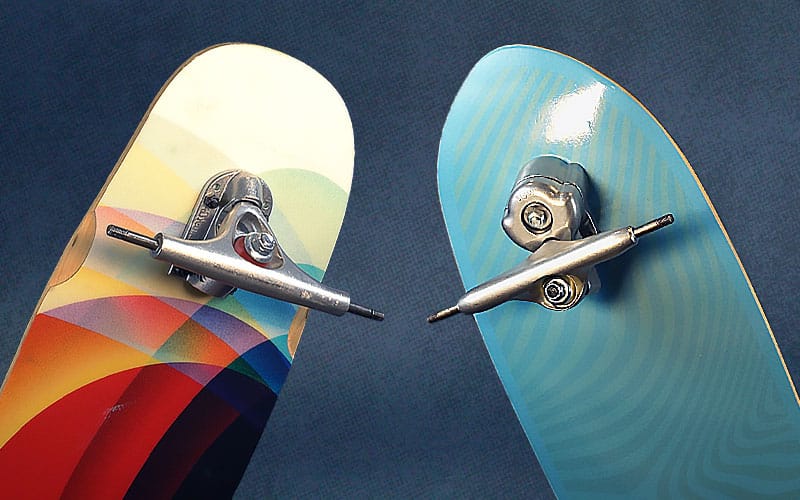Choosing a surfskate can be an overwhelming experience.
I went through it about five years ago and made many mistakes.
A simple process to follow is first to define your riding style. Then, align it with surfskate trucks that’ll complement that style.
Simple enough, right?
So, let’s first discuss how to define your riding style.
1. Define Riding Style
The first thing you need to figure out is what type of riding style you want to do.
Most people are using them to be highly maneuverable in small spaces. Others want a deep carving experience but still retain some stability.
To keep it simple, it boils down to two kinds of surfskate trucks…
If you want something you can pump from a standstill, you’ll want to check out…
If you want something more stable and easier to push for longer distances, check out…
You can also reference our best surfskate brands post for more info on the adapters. There are even affordable ways to tweak your current setup to carve sharper and feel surfier.
It can be as simple as defining your riding style and aligning it with the right surfskate truck system. However, if you want to dive deeper, I have other things I wish I had known.

Deck Shape
Now that your riding style is defined, it’s time to figure out your ideal deck shape. There are a few different characteristics you’ll want to understand.
Let’s start with one of the most important ones…
Wheelbase
The wheelbase is the measurement from one inner truck hole to the other. You can see what I mean in the image below. It’s important because it affects how your board turns (although not the only variable).

The reason why it’s measured between the inner holes is that manufacturers can’t control what trucks you put on your setup. And traditional kingpins, reverse kingpins, and surfskate adapters have different baseplate angles… Which affects the ‘true’ wheelbase.
Surfskate wheelbases typically range from 14” to 20” (35.5 cm to 51 cm). But, there are always exceptions, like Hamboards.
If you don’t know where to start, check out our surfskate wheelbase calculator. I want to clarify that picking a wheelbase isn’t a science. It’s subjective! The best thing you can do is go to your local shop or community meetup and test for yourself. We all connect with different setups.
If you cannot test in person, then the calculator will be better than randomly guessing.
Concave
Concave is the rail-to-rail curvature.
If you’re unsure what that means, check the below image.
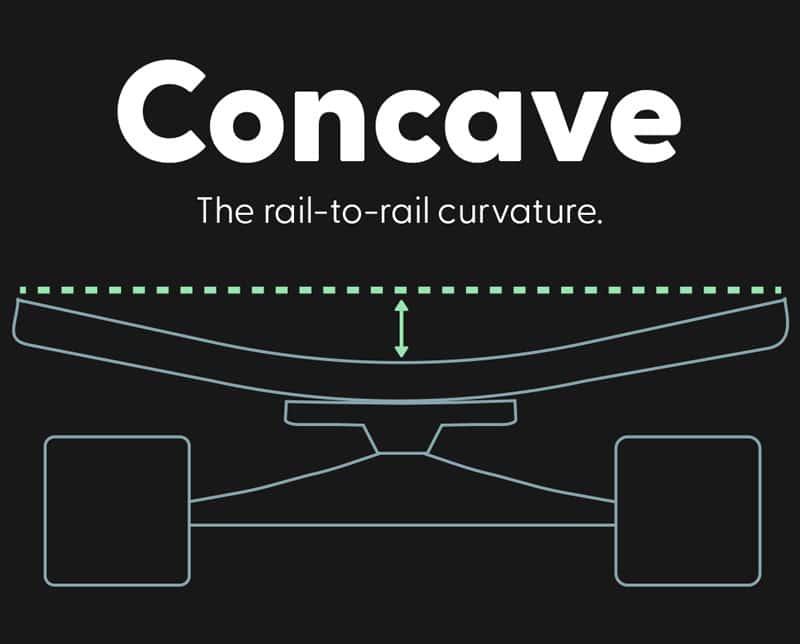
There are a few things to keep in mind when deciding on concave. If you want to do aggressive carves, more concave could help lock you in. Flatter decks offer less of that locked-in feel and are better suited for mellow carving.
If you have larger feet, concave could irritate you while riding. My friend is a shoe size 12 (US men’s) and prefers decks to be flatter.
Again, it comes down to your preference because I’m a shoe size 11 and enjoy steeper concave.
Kicktail & Nose
The kicktail and nose are other important considerations in choosing the right surfskate.
Kicktails are often used to do ollies/fliptricks on street skateboards. For surfskates, they’re mainly used to create leverage when carving and pumping.
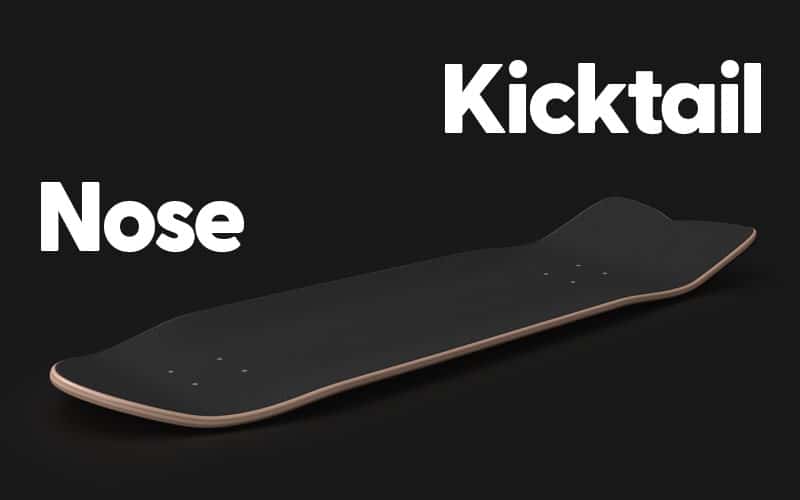
Much like a traction pad on a surfboard, a kicktail gives your back foot something to push back against. And in turn, it allows the board to push you forward or in the direction you’re trying to maneuver.
Noses are mostly used to catch your front foot when doing radical snaps. If you shred skateparks, you’ll most likely want a nose.
Length & Width
Next, you’ll want to figure out the right length and width.
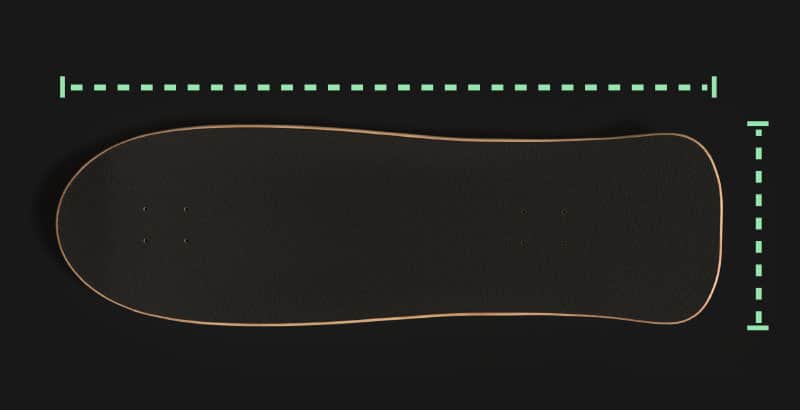
For most people, a deck length in the 30” to 34” range (76cm to 87cm) and width in the 9″ to 10.5″ range (23cm to 27cm) will work well.
I wouldn’t recommend getting a board much smaller than the lower end of this range. The reason is that it’ll be tough to get a comfortable stance when doing deep carves.
But, as I’ve said throughout this article, it’s subjective. There are designs outside of this range that you can still enjoy.
Reference our best surfskate decks post.
Wheels
Another essential component to consider when choosing your surfskate is the wheels.
There are a few things you’ll want to consider when picking.
Reference my best surfskate wheels post.
- Wheel size
- Wheel hardness
- Lip profile
Wheel Size
When figuring out the ideal wheel size, you’ll want to consider the height (diameter) and width (contact patch). Below is a visual representation.
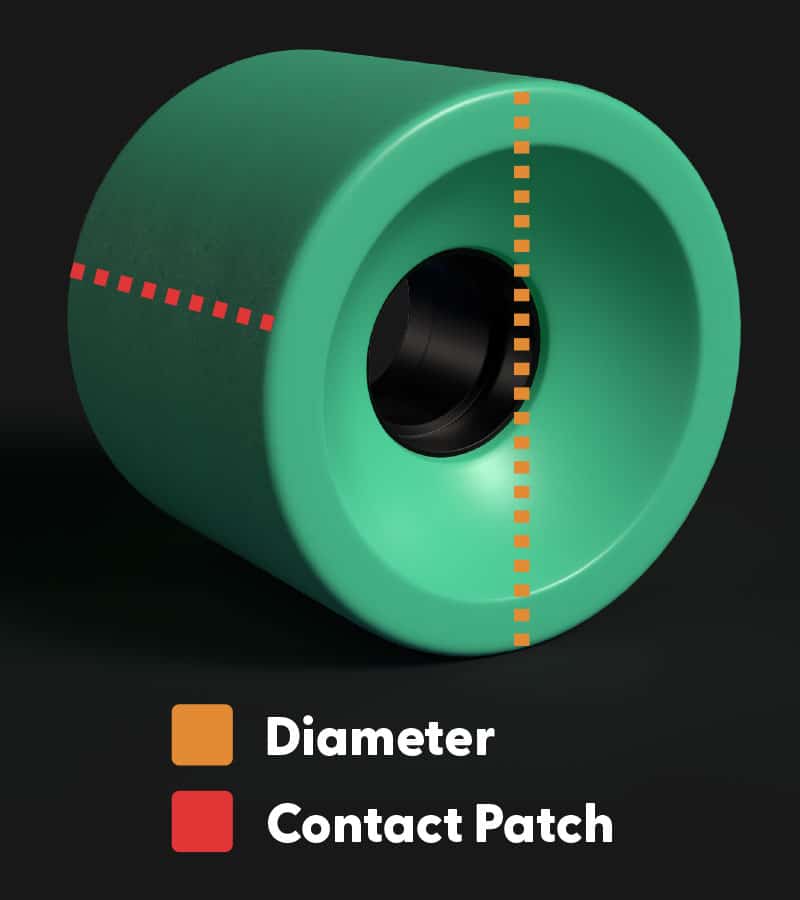
Most surfskates wheels will be in the 60-75mm range. It’s vital that you don’t get wheels too large that cause wheel bite. If you buy a complete, you most likely won’t have to worry about wheelbite since they’ve been tested. But it’s always good to test for wheelbite before you ride.
Wheel Edge Profile
To keep it simple, wheel edge/lip profile falls into two categories…
- Rounded edge
- Square edge
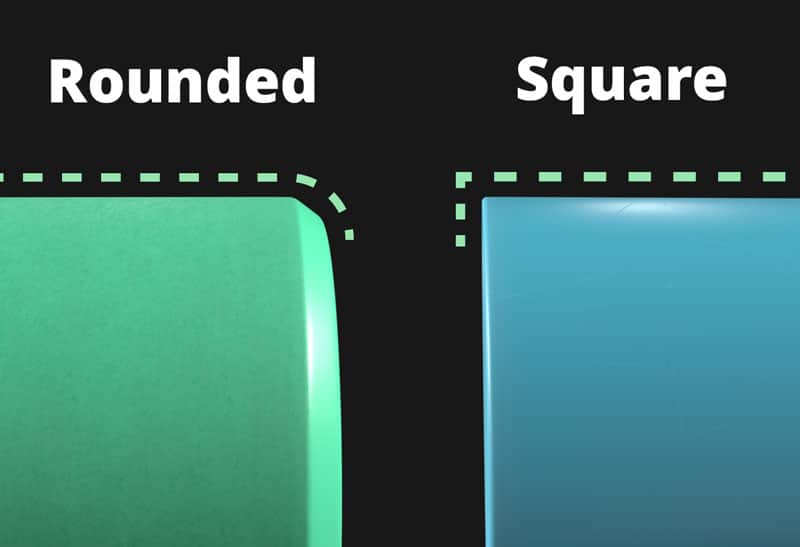
Rounded-edged wheels are easier to slide since there’s less traction. This is ideal if you want to practice surf-style maneuvers that mimic blowing out the tail.
Square-edged wheels will grip through tight and aggressive carves. This is ideal if you want to focus on deep carves without sliding out.
Wheel Hardness
Wheel hardness (durometer) is also a significant factor to consider. A harder wheel will slide out easier. And a softer wheel – more grip.
Surfskate wheels usually range from 75a-85a. Again, this is subjective because you might want something harder, but most surfskaters don’t want a wheel that’ll slip too much.
The problem is that urethane formula varies with different brands. So a 77a durometer from Orangatang won’t be the same as a 77a from Seismic.
Durometer is still suitable to use as a gauge, just not an exact science.
There is no tried-and-true formula for which wheel hardness will work best for you. Surfskate manufacturers select the wheel hardness that works best with their boards, but you may like something different.
Trying different surfskate wheels is the only way to determine what suits you best.
Bottom Line
Hopefully, by briefly covering wheelbase and deck/wheel characteristics, you can better understand how to choose a surfskate to fit your riding style.
At the end of the day, the best solution is if you can test before you buy.

